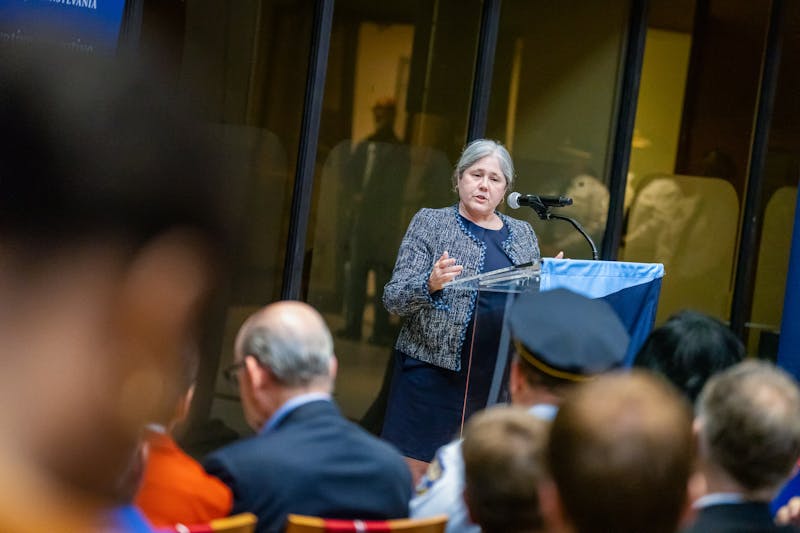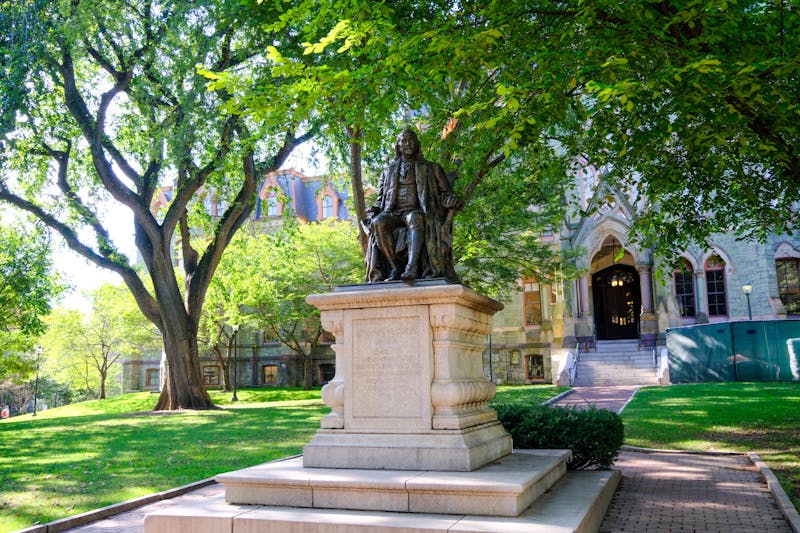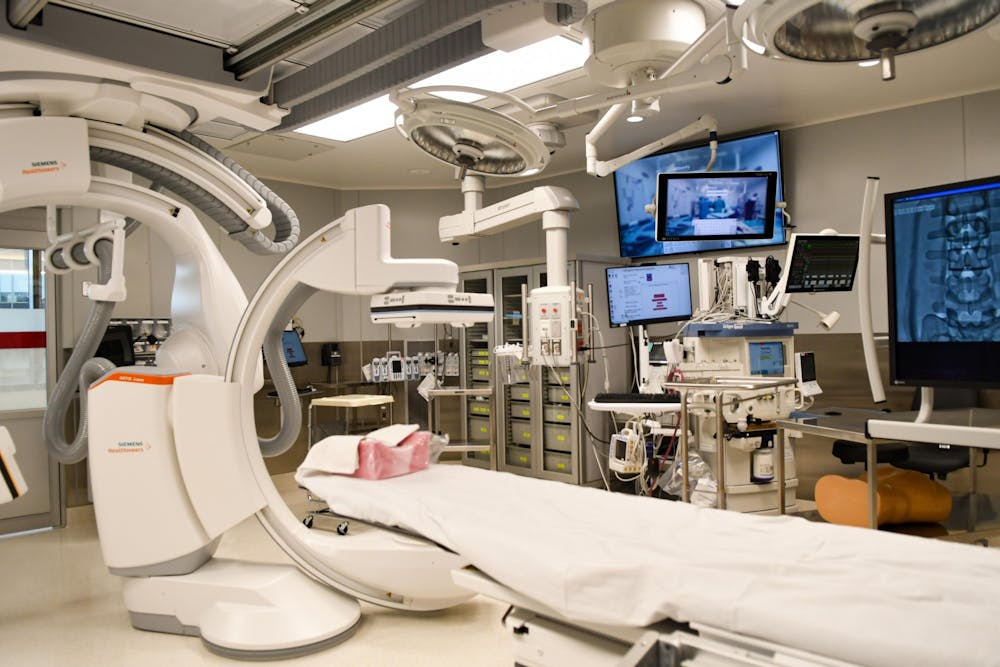
One of the operating rooms inside the Pavillion.
Credit: Sukhmani KaurThe Pavilion, Penn Medicine's new 1.5-million-square-foot, 17-story facility is set to open to patients this week.
After five years of construction, which totaled $1.6 billion, the Pavilion will accept its first patients on Oct. 30. The facility will offer advanced technology features for both patients and clinicians to improve patient care and comfort. More than half of the clinical services previously offered by the Hospital of the University of Pennsylvania, including cardiac surgery and oncology, will shift to the Pavilion.
The Pavilion will house 504 patients in single-occupancy rooms equipped with "smart room" features, such as interactive smart TV monitors to display important patient care information, a MyChart Bedside tablet that displays medication and appointment times, and outside door displays to show clinicians relevant information about the patient.
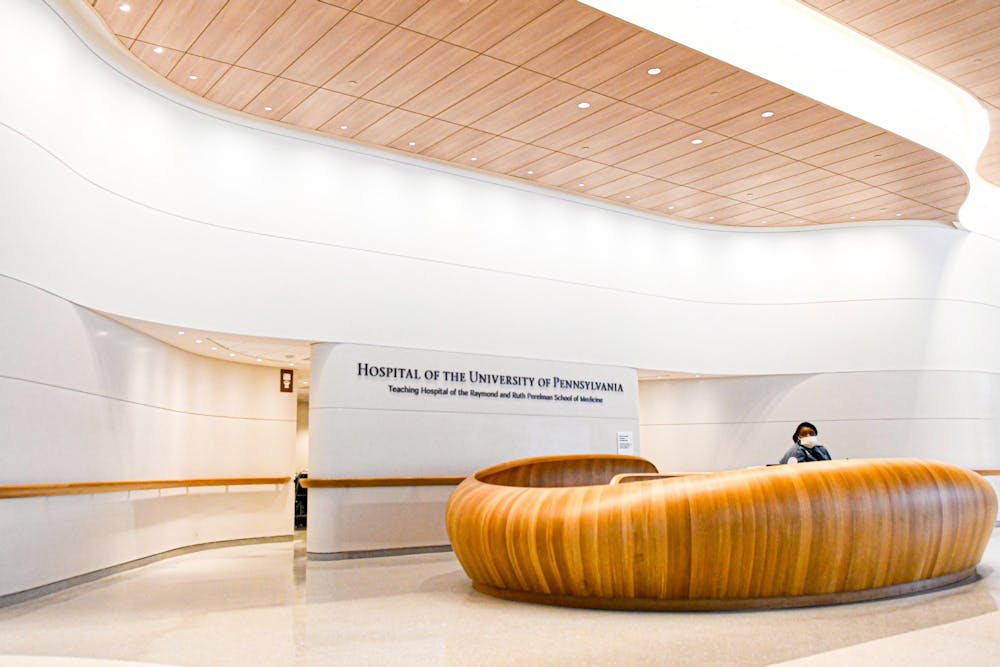
The entrance to the HUP Pavilion, which will open its doors to patients on Oct. 30.
"The team, when they walk in, can use the monitor to teach, and we can put up information about the patient, their own laboratory values, and we have the ability to show them their X-rays from their bedside," Penn Medicine professor Selina M. Luger said. Luger was part of the clinical team that drove the redesign of patient care.
The IRIS smart TVs will also offer patients access to television and entertainment. IRIS allows patients to adjust the room environment, including temperature, window shades, lights, and the opaqueness of the room's privacy glass. Large glass windows, providing a view of Philadelphia and ample natural light, were implemented to help instill a natural and soothing environment for the teams and patients.
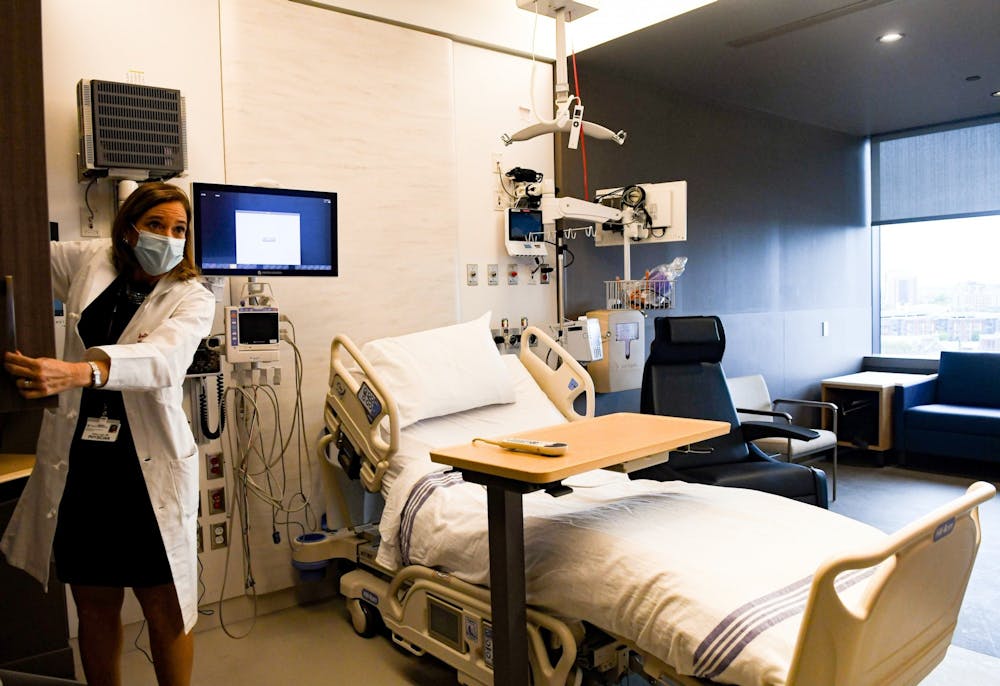
Penn Medicine Hematologist and Oncologist Selina M. Luger opens a closet of PPE to discuss the design enhancements within the new patient room at the Pavilion on Oct. 26, 2021.
The COVID-19 pandemic helped building designers realize they needed to add mitigation tools to rooms to help reduce the spread of infectious diseases. Patient rooms are equipped with adequate ventilation and closets stocked with personal protective equipment, Luger said.
The rooms were primarily designed for standard patient care according to state guidelines, but they can be turned into intensive care unit rooms if needed. The size of the rooms can also support X-ray machines and echocardiograms, a machine that monitors the heart's valve and chamber blood flow, to mitigate disturbance to the patient, HUP CEO Regina Cunningham said.
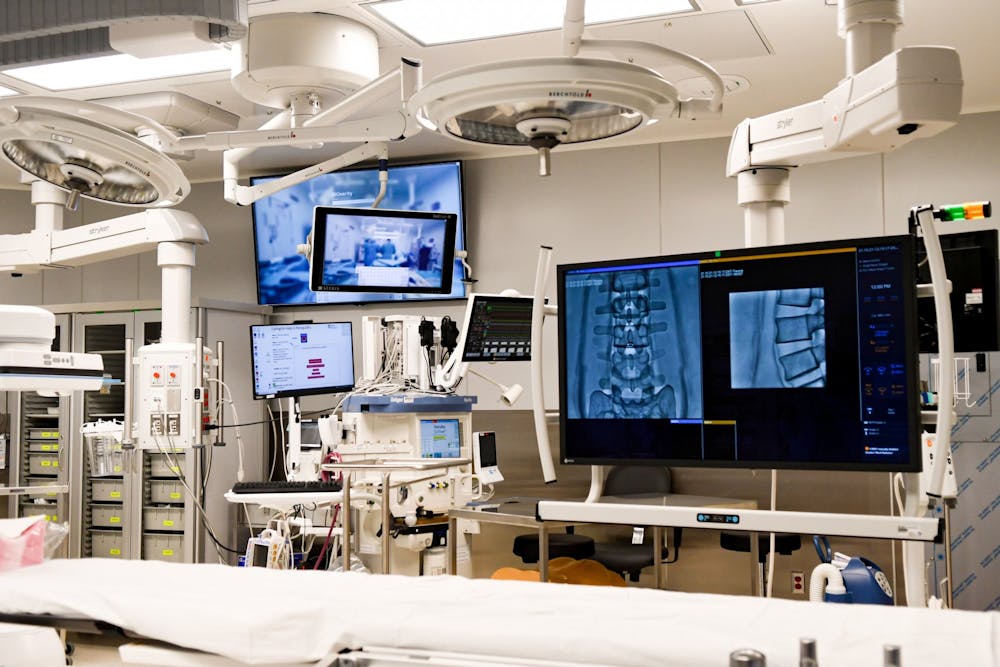
The operating room inside the Pavilion has advanced imaging technology to promote collaboration between different sub-specialized physicians when performing surgery.
The Pavilion also houses 47 operating rooms with specialized imaging technology to promote collaboration between different medical subspecialties and increase precision in image-guided surgeries, professor of Clinical Anesthesiology and Critical Care John H. Keogh said.
The Pavilion also received a gold certification from Leadership in Energy and Environmental Design Healthcare, and is the largest LEED Healthcare certified project in the world. The LEED Healthcare rating system honors green initiatives at inpatient, outpatient, and licensed long-term care facilities, medical offices, assisted living facilities, and medical education and research centers.
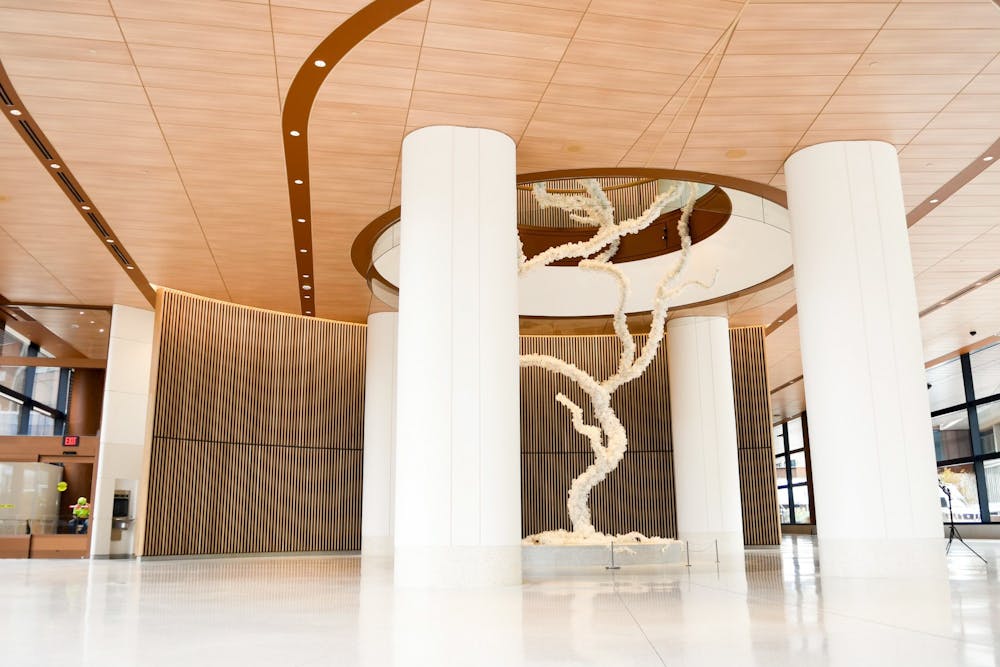
The "DNA Tree of Life" sculpture is based on the structure of DNA, the map of the Schuylkill River, and teaching of the Gift of Life.
Penn Medicine partnered with various artists to decorate the Pavilion. The atrium features a sculpture designed by Maya Lin, a renowned artist known for designing the Vietnam Veterans Memorial in Washington, D.C. Inspired by the shape of DNA, tree branches, and the Schuylkill River, the artwork — titled DNA Tree of Life — hangs from the ceiling. The piece displays a hidden steel tree structure concealed with hundreds of glass beads that reflect the sunlight.
Philadelphia artist Odili Donald Odita also has art on display in the Pavilion — he created a wall mural that spans across two floors. The mural, titled “Field and Sky,” is a kaleidoscope of brightly colored shapes, which Odita said reflect the complexity of the outside world. Odita and Lin's artworks greet patients as they enter the building.
"Many of the elements of this building were built thinking about how we can support the advancement in care to help patients thrive in the space and instill the care of tomorrow," Cunningham said.
The Daily Pennsylvanian is an independent, student-run newspaper. Please consider making a donation to support the coverage that shapes the University. Your generosity ensures a future of strong journalism at Penn.
Donate




